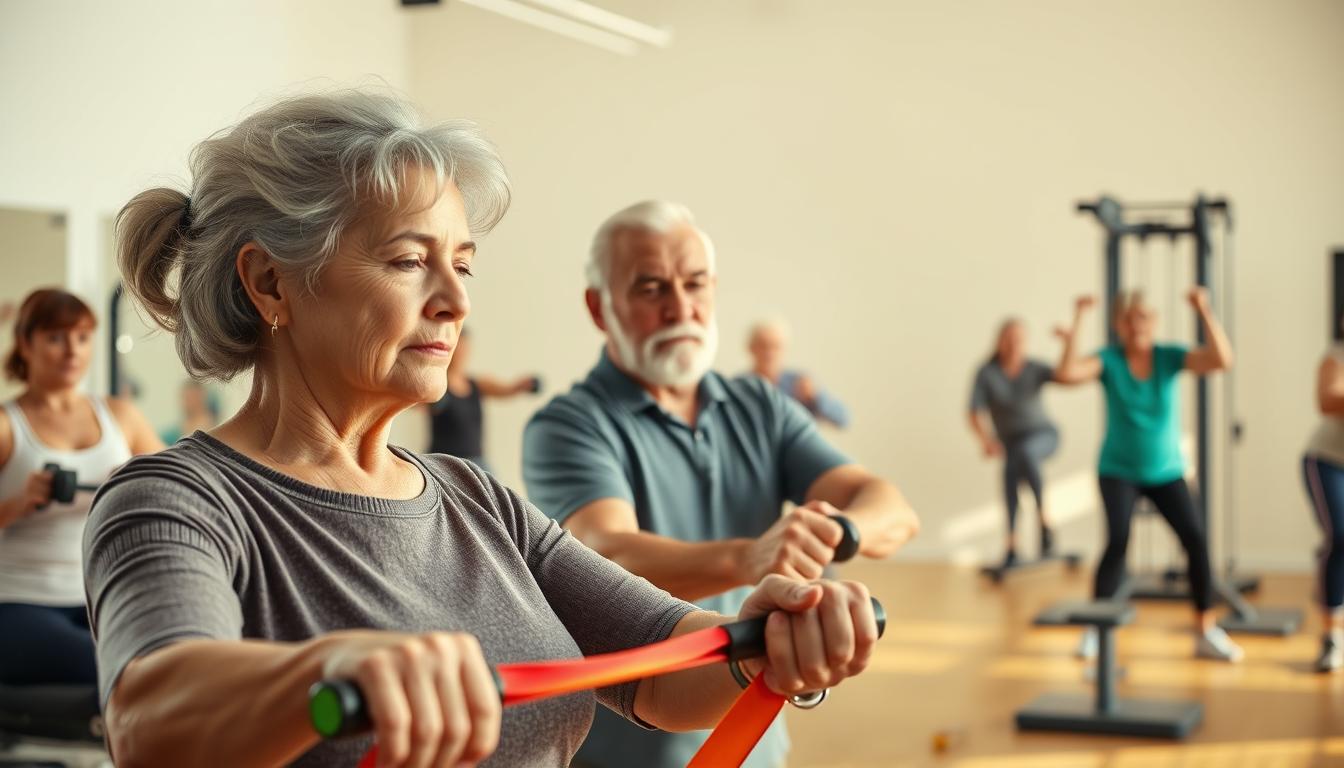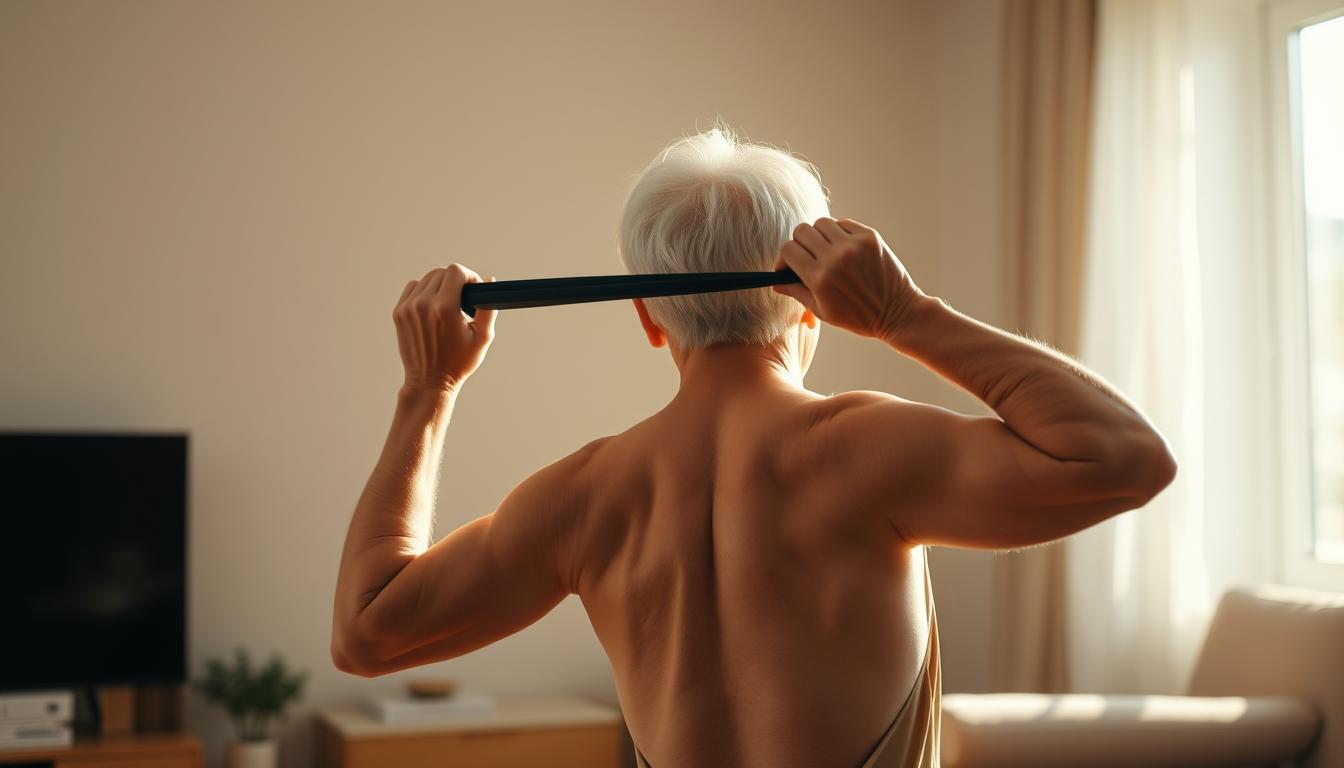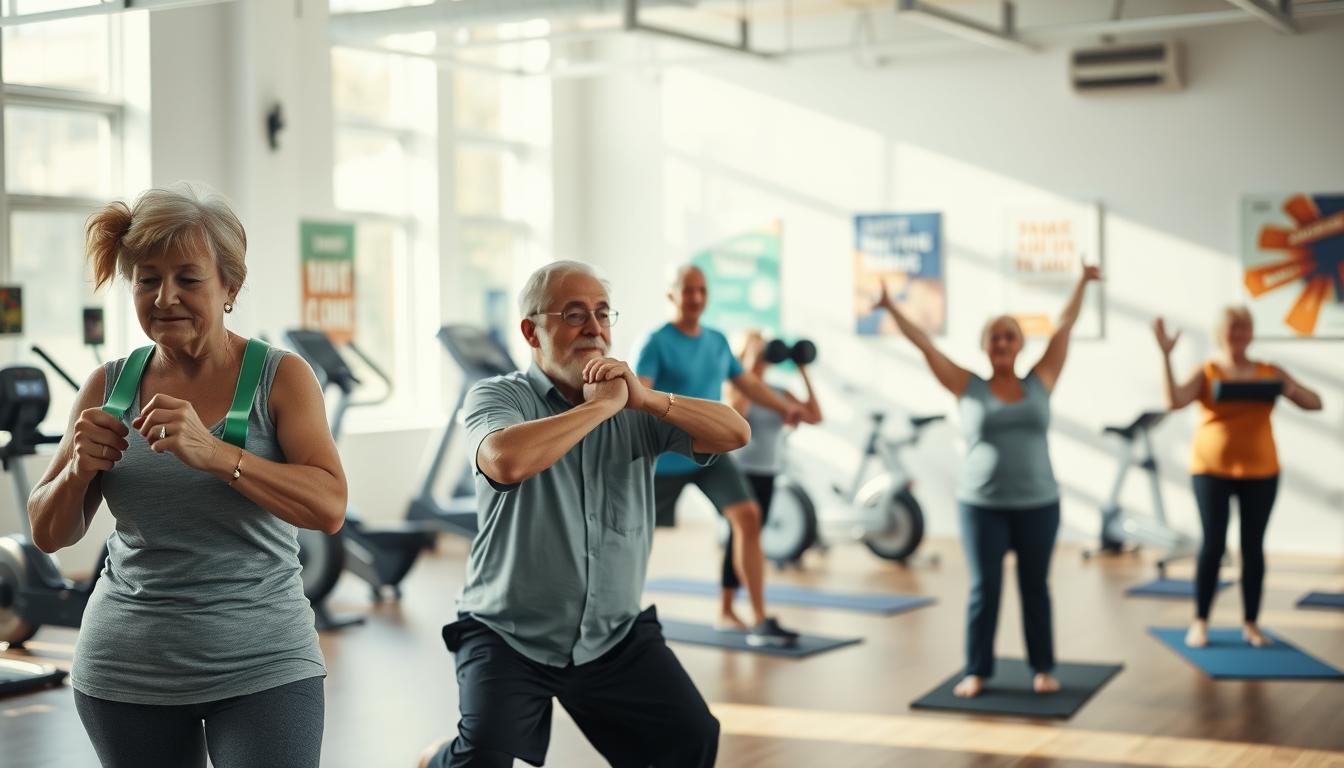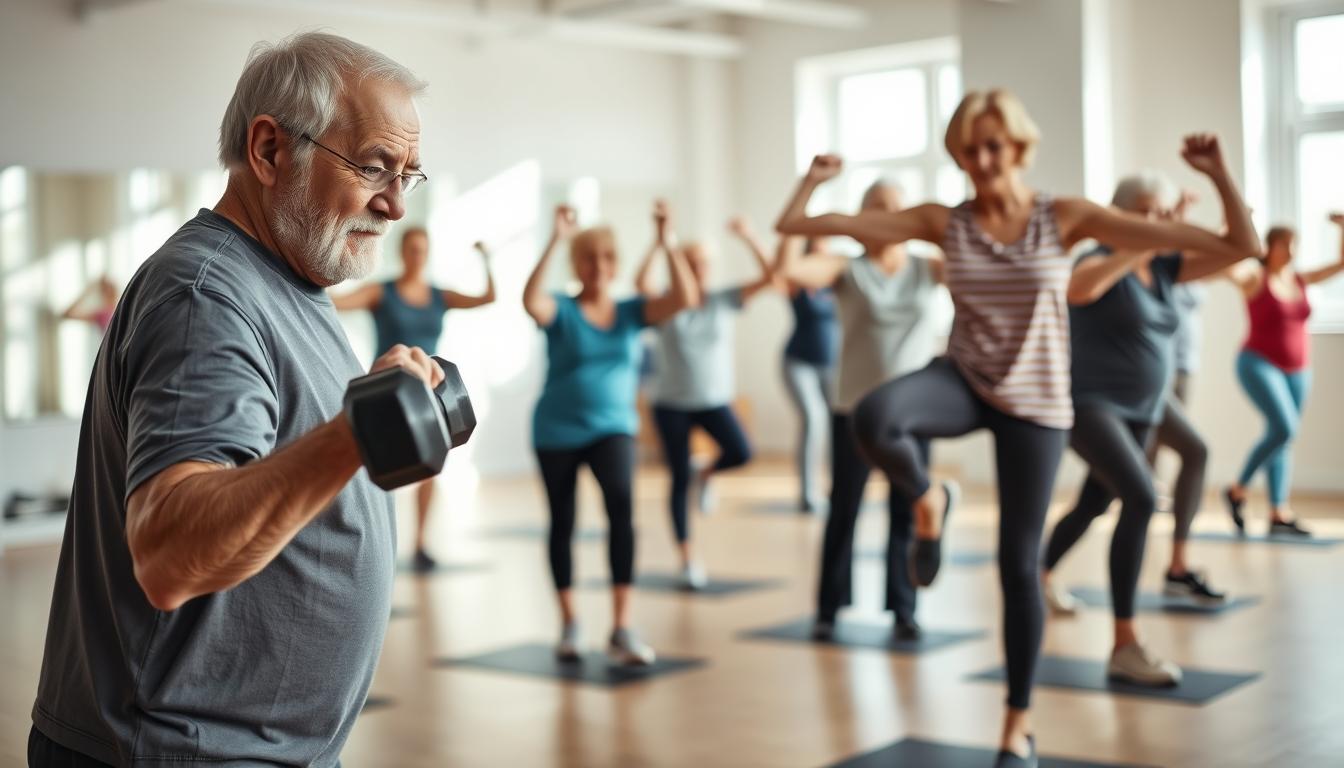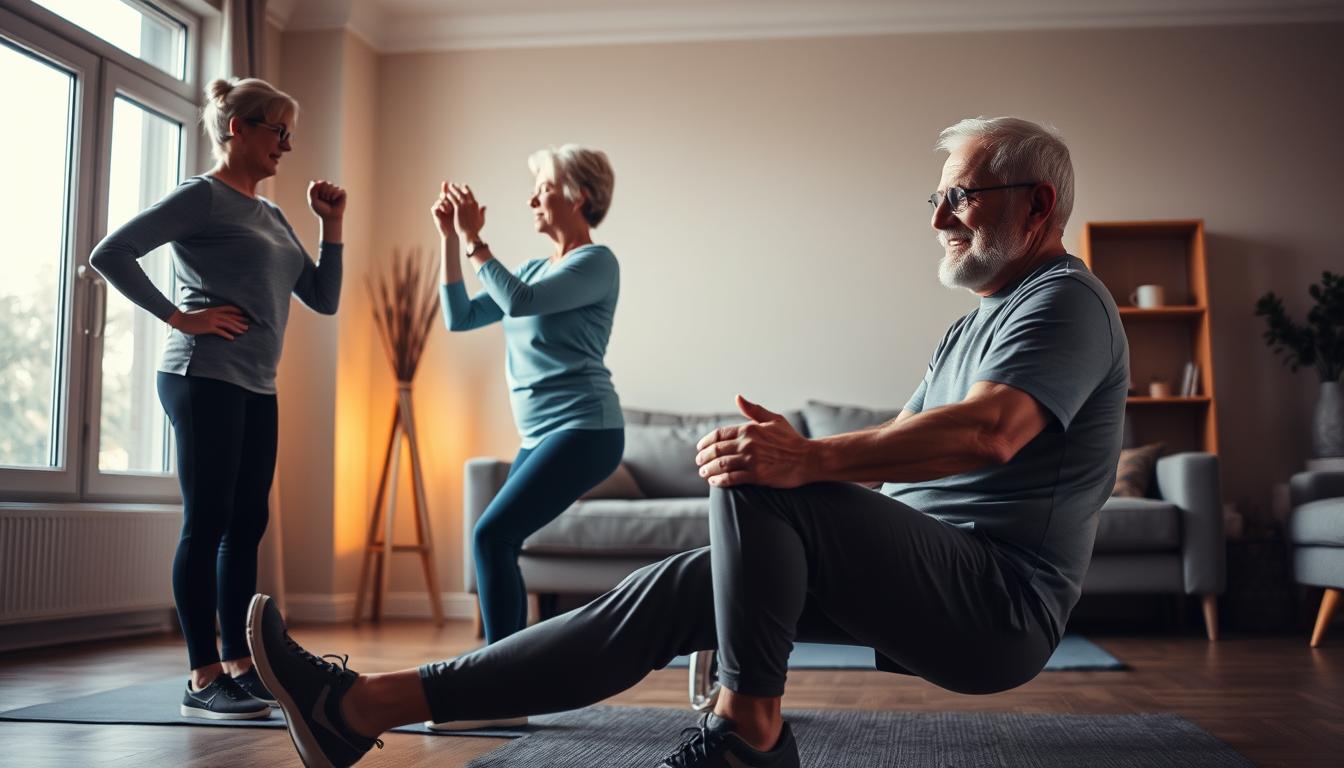Want to rebuild brittle bones after 60? Lifting weights and stomping your feet might sound odd, but they’re your secret weapons. Bone density isn’t a lost cause—it’s like rewiring your skeleton’s lazy habits. I’ve seen folks in their 70s out-lift gym bros half their age. No cap.
Here’s the science: when you push against gravity—think squats or wall push-ups—your body shouts, “Hey! We need more reinforcements here!” That’s code for bone-building cells scrambling to work overtime. My grandma called it “tricking your bones into thinking they’re 25 again.” She did foot stomps while watching Jeopardy. Smart lady.
But don’t just take my word for it. Studies show even gentle resistance bands can slash fracture risks by 40%. Picture your bones as a rusty gate—consistent movement oils the hinges. And yes, soup cans count as dumbbells if you’re starting out. Creativity trumps excuses.
Before you channel your inner Rocky, though: chat with your doc. Your hips and spine need a game plan, not guesswork. Let’s turn “frail” into “nope, not today” together.
Understanding Bone Health and Osteoporosis

Grandma’s stoop didn’t happen overnight—and neither does strong bone density. Think of your skeleton like a house: after 60, the beams creak if you don’t reinforce ’em. My neighbor Margie swears her daily grocery haul (milk jugs count!) kept her spine straighter than her teenage grandkids. True story.
Your Bones Are Chatty—Listen Up
Bones shrink when ignored. Picture that antique teacup collecting dust—same idea. Weight-bearing activities like stair climbing or heel drops send “repair crew” signals. Even slow walks with a granddog count. Your bones deserve a little tough love.
No Guesswork Allowed
Ever start a road trip without a map? Don’t. A quick bone density scan shows where you’re sturdy and where you’re “honey, let’s fix that”. Docs use T-scores—think of ’em like a bone credit rating. My rule? Test first, sweat later.
Mild moves matter most early on. Try standing calf raises while brushing teeth or squeezing a stress ball during TV ads. Balance drills like single-leg stands (near a counter!) build stability. It’s not about lifting heavy—it’s about lifting smart.
Resistance Exercises for Osteoporosis in Seniors: Methods & Benefits
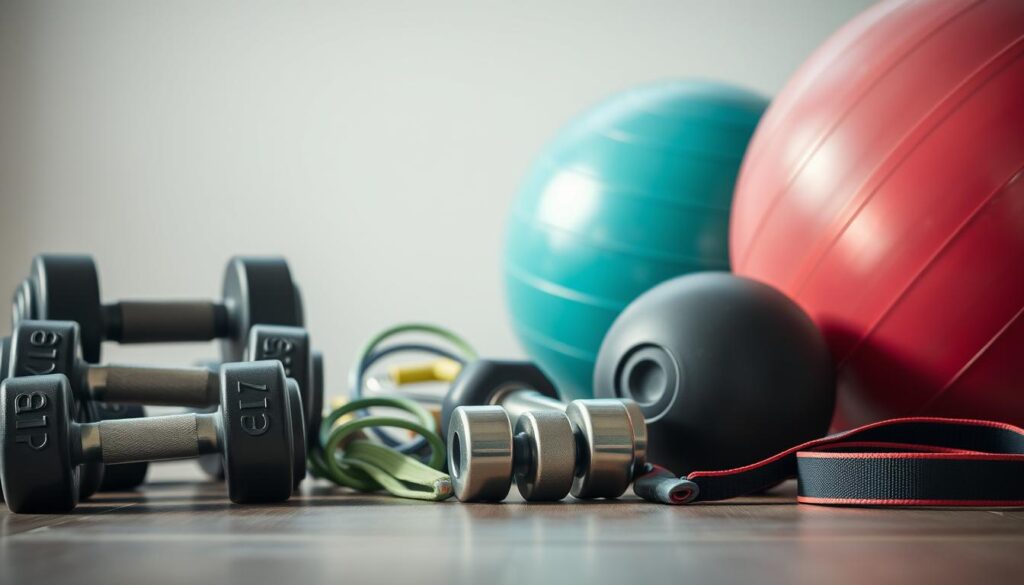
Your bones might be quieter than a teenager’s text replies, but they’re screaming for attention. Let’s talk shop: when you challenge your frame with smart exercise, you’re essentially negotiating with biology. I call it “muscle diplomacy”—persuading your skeleton to upgrade its infrastructure.
Tangible Benefits from Weight-Bearing Impact
Ever stomped grapes for wine? That’s your bones during a brisk walk. Each heel strike sends a “hey, wake up!” signal to bone cells. Studies show routines like dancing or stair-climbing can boost mineral density by 3% in six months. That’s like adding rebar to concrete.
Low-impact doesn’t mean low-results. Try marching in place during phone calls or doing seated leg presses with canned goods. These best seated chair exercises prove you don’t need equipment to make bones hustle. Your hips will thank you later.
How Muscle Work Stimulates Bone Renewal
Here’s the magic: every bicep curl or wall push-up creates tension that tugs on bone attachments. It’s like your muscles are yanking a fire alarm—osteoblasts (bone builders) come running. Even gentle resistance bands trigger this repair party.
My trick? Pair movements with daily rituals. Do calf raises while microwaving tea or grip a stress ball during commercials. Each squeeze whispers “more scaffolding needed here” to your skeleton. Bonus: stronger muscles mean better balance—nature’s fracture prevention plan.
Remember, consistency beats intensity. Three 10-minute sessions weekly can outwork one heroic gym day. Your bones aren’t grading your effort—they’re just thrilled you showed up.
Implementing Weight-Bearing and Balance Drills
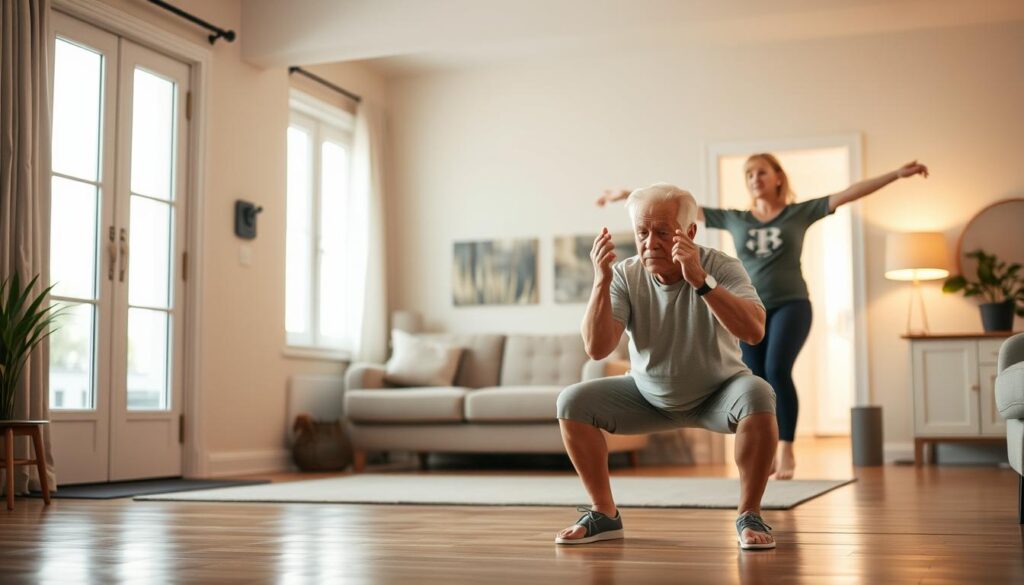
Your living room just became a bone-building studio. No gym membership required—just your body weight and that trusty kitchen counter. Let’s turn coffee breaks into strength sessions.
Home-Based Impact Moves for Daily Use
Start with “newspaper stomps”: plant both feet firmly, then alternate tapping heels like you’re crushing grapes (or bad ideas). Next, try “toaster rises”: grip the counter, lift onto toes slowly—imagine your heels avoiding lava. Do 10 reps while waiting for toast.
For seated options, chair marches work wonders. Lift knees rhythmically—like conducting an orchestra with your legs. Bonus points for humming show tunes.
Using Support Bars and Furniture for Stability
Grab that sturdy chair—you know the one! Practice “flamingo stands”: hold its back, lift one leg slightly. Pretend you’re a tightrope walker auditioning for Cirque du Soleil. Start with 5-second holds.
Try “sidekick slides”: face the counter, slide one leg sideways like you’re pushing away dust bunnies. Keep movements smooth—no jerky “disco fever” moves. These drills improve balance while whispering “build bone here” to your hips.
- Wall push-ups during commercial breaks
- Heel-to-toe walks along hallway baseboards
- Calf raises while brushing teeth (2 minutes = 30 reps!)
Safety first: progress slower than a sloth on vacation. If shaky, widen your stance like a sumo wrestler in socks. Your bones crave consistency, not heroics. Now go conquer that living room!
Step-by-Step Resistance Exercise Routines
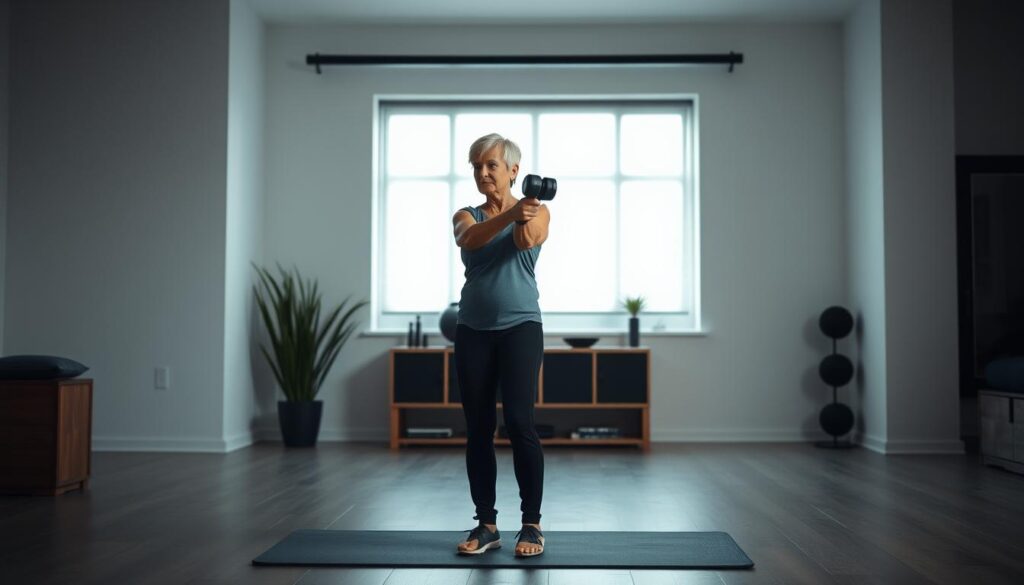
Your kitchen counter is about to become your new best friend for bone health. Let’s turn everyday spaces into strength zones using moves that challenge your frame without overwhelming it. No gym required—just grab a chair and canned goods. Ready? Let’s get moving.
Foot Stomps & Biceps Curls Made Simple
Foot stomps are nature’s wake-up call for lazy bones. Stand tall near a sturdy surface. Lift your right heel, then slam it down like you’re squashing a rogue cockroach. Alternate feet for 30 seconds. Too easy? Add rhythm: stomp to your favorite oldies tune.
For biceps curls, sit with soup cans in hand. Palms facing up, elbows glued to ribs. Lift weights toward shoulders like you’re hoisting trophies. Lower slowly—imagine resisting quicksand. Do 10 reps. Tip: Hum “Eye of the Tiger” for extra grit.
Shoulder Lifts & Hamstring Curls—Smart Style
Shoulder lifts build armor around fragile bones. Stand with light weights (water bottles work). Raise arms sideways to shoulder height—pretend you’re a airplane taxiing for takeoff. Hold 3 seconds, then lower. Keep movements smoother than jazz saxophone.
Hamstring curls fire up those legs. Hold the counter, bend one knee like you’re kicking your own butt. Squeeze for 2 counts. Alternate sides. Too wobbly? Sit and use ankle weights from full-body workouts.
| Exercise | Target Area | Equipment | Pro Tip |
|---|---|---|---|
| Foot Stomps | Feet/Hips | None | Stomp to music beats |
| Biceps Curls | Arms | Cans/Bands | Exhale on lift |
| Shoulder Lifts | Back/Shoulders | Water Bottles | Engage core muscles |
| Hamstring Curls | Legs/Knees | Chair | Move like molasses |
Remember: Form trumps speed. If your knees protest during curls, reduce range. Back acting fussy? Skip weights and use bands. These osteoporosis exercises aren’t about perfection—they’re about showing up. Your bones will high-five you later.
Incorporating Progressive Muscle Training
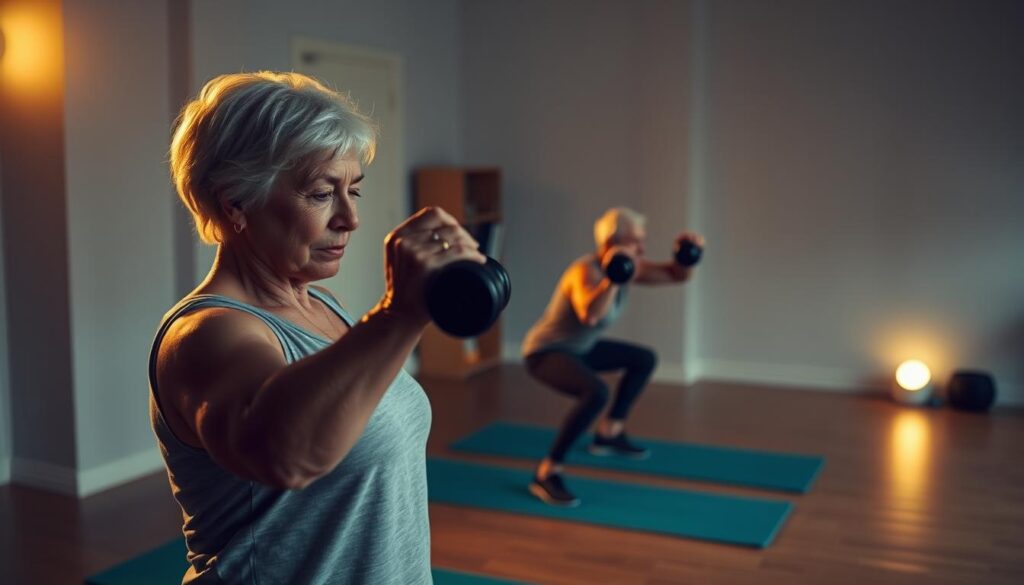
Your bones don’t care about your age—they just want a good challenge. Think of progressive overload like upgrading your phone plan: you start with basic service, then gradually add data as your needs grow. Same principle applies here. The goal? Trick your muscles into thinking they’re training for a marathon (but at grandma’s pace).
From Bands to Weights Without the Wobbles
Start with resistance bands—they’re the training wheels of fitness. Loop one around your thighs during chair squats or pull it taut during arm curls. When those yellow bands feel lighter than a grocery bag, it’s time to flirt with light weights. Soup cans work, but actual dumbbells? Chef’s kiss.
Here’s the playbook:
- Week 1-2: Bands only (focus on smooth motions)
- Week 3-4: Add 1-pound weights for arms and shoulders
- Week 5+: Mix bands with 2-3 pound weights for compound moves
WebMD’s guidelines confirm it: small load increases every 2-3 weeks reduce injury risks by 60%. Your muscles adapt faster than your bones, so patience is key. Treat progression like seasoning soup—add a pinch, taste, adjust.
Listen to your body’s feedback. Soreness that fades by noon? Good. Pain lingering like unwanted guests? Dial it back. Remember, it’s not about going beast mode overnight. Consistency turns “I can’t” into “Watch me”—one soup can at a time.
Tailoring Your Bone-Strengthening Workout Program
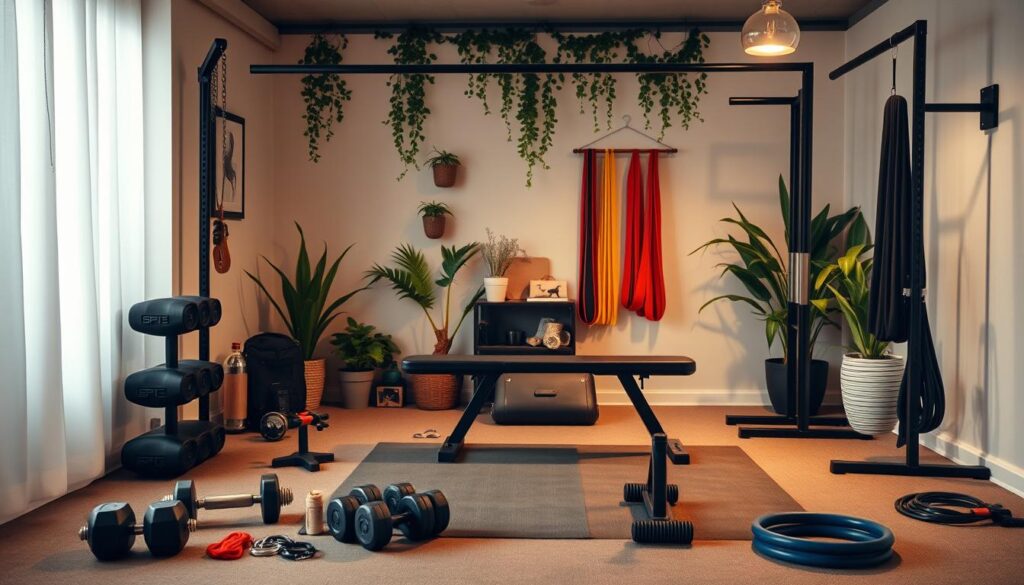
Your skeleton’s unique blueprint demands a custom-fit approach—like altering jeans to hug your curves. I’ve seen 68-year-olds with spinal fractures out-lift weekend warriors by adapting their routine smarter, not harder. Let’s stitch together a plan that fits your body’s needs like a bespoke suit.
Customizing Routines Based on Fracture Risk and Balance
First, know your weak spots. If your doc mentions “vertebral fragility” or “hip vulnerability,” treat it like weather alerts—prepare accordingly. For high fracture risk, swap jumping jacks for seated leg presses using resistance bands. Unsteady on your feet? Try tai chi moves between strength sets—it’s like giving your balance a GPS upgrade.
Three rules for safe tweaks:
- If kneeling hurts, do standing hamstring curls with a chair
- Spine feeling delicate? Replace forward bends with wall slides
- For shaky knees, add aquatic exercises—water’s cushioning effect slashes fall risks
Monitoring Progress with Real-Time Adjustments
Track improvements like a detective solving a mystery. Notice you’re doing 15 heel raises instead of 10? That’s your bone density whispering “keep going.” Less back twinges during shoulder lifts? Your muscles are finally playing nice with your spine.
Use this cheat sheet to gauge wins:
| Metric | Tool | Frequency | Goal |
|---|---|---|---|
| Rep Count | Notebook/App | Weekly | 5% increase monthly |
| Discomfort Level | 1-10 Scale | Post-Workout | Reduce by 2 points in 6 weeks |
| Balance Tests | Single-Leg Stand | Biweekly | +3 seconds hold time |
Revisit your plan every 4-6 weeks with a physical therapist—they’ll spot adjustments you might miss. Remember, this isn’t about keeping up with influencers. It’s about crafting a fitness blueprint that evolves as fast (or slow) as your body does. Now go make that program your own—one modified move at a time.
Wrapping It All Up Without a Full Stop
Think of your bones as that one houseplant you almost killed—until you learned its secret language. Movement is their sunshine, and every heel stomp or soup-can curl is like watering them with liquid grit. I’ve watched clients transform “fragile” into “sturdy” by treating their exercise program like a retirement party playlist—mixing slow jams with upbeat classics.
Your toolbox now holds surprises: chair marches that build leg armor, wall push-ups that whisper “grow stronger” to your spine. Remember—variety isn’t just the spice of life. It’s the secret sauce for bone density that laughs at gravity’s jokes. Swap bands for water bottles when your muscles start yawning. Try tai chi between strength sets if your balance feels like a Jenga tower.
Small tweaks spark big changes. That 1-pound weight increase? Your body notices. Those kitchen-counter calf raises? Your hips throw silent thank-you parties. Track progress like a food critic reviews tacos—obsessively, but with joy.
This isn’t goodbye. It’s “see you tomorrow” with fresh moves. Maybe swap foot stomps for backyard line dancing? Turn laundry-folding into a balance exercise? Your bones don’t care about rules—just that you keep surprising them. Now go be that rebel senior who out-lifts the grandkids… one playful rep at a time
